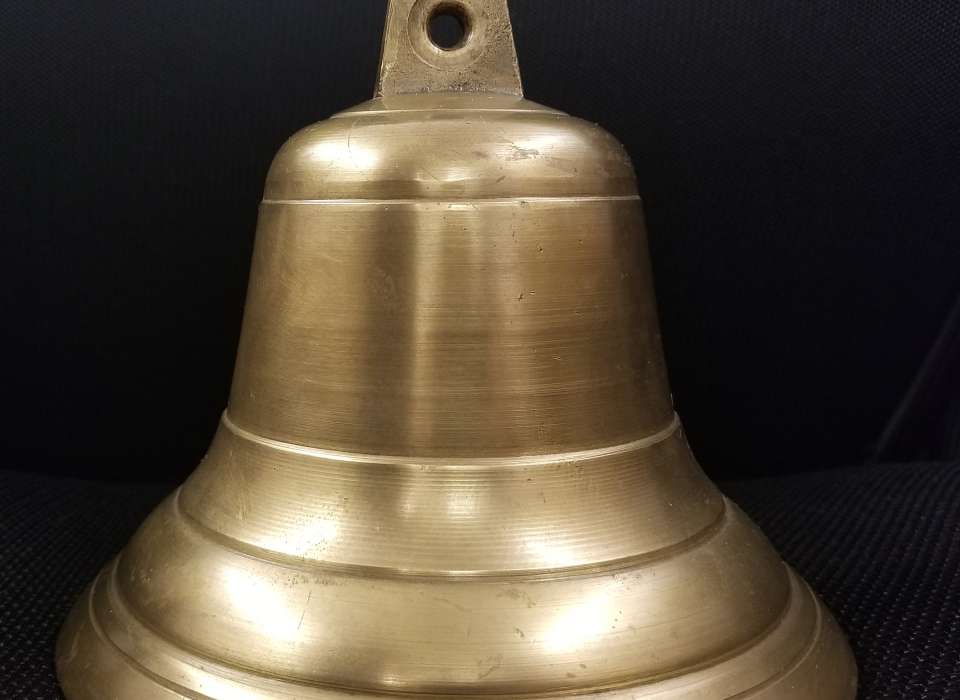The Museum has been very fortunate over the years to receive many generous donations of artifacts. We get hundreds, even thousands, of artifact offers each year. Unfortunately, we cannot take them all, no matter how desirable the artifact.
Each one we take into the Museum, no matter the size, tells its own unique story. The story connected to an artifact is one of the most important things we have to consider. I can write about an M1 Garand rifle all day long, but at the end of the day, it is still just a rifle. But, if I have an M1 Garand rifle that was carried by an infantryman when he stormed Omaha Beach, I can tell the story of that solider carrying it and the importance of that day in June 1944. Artifacts, and the story they tell, can leave one of the most powerful and lasting impressions on not only those of us interpreting them, but also on our visitors who come to see them.
One of the items I like to tell visitors about is a fire-cart bell from the Japanese city of Aomori, which was firebombed by American B-29 bombers flying from the Mariana Islands. Late on the night of June 28, 1945, B-29s began dropping M74 napalm-filled bombs on Aomori. The Japanese only had hand-pulled carts with water pumps to fight the fires, which soon raged out of control. In just one hour, 63 B-29s had destroyed 88 percent of the mostly wooden Japanese city. Over 1,700 Japanese were killed, and 18,000 homes destroyed.
Seaman 1st Class Robert McClintock from Seattle, Washington, was assigned to the US Strategic Bombing Survey in 1945. This was a board comprising both military and civilian personnel charged with reviewing the strategic bombing campaign in both Europe and the Pacific by entering the bombed-out cities and seeing the devastation firsthand. McClintock helped with the report for Aomori, and he was among the first into the city following the Japanese surrender. McClintock and the Japanese got along so well that the Japanese presented him with the bell off of one of the fire carts as a symbol of kindness between the Americans and Japanese.
This bell, ringing from the fire cart, would have called the Japanese out into the streets to try to save their homes and businesses. Unfortunately, as we know, it was not enough. The strategic bombing campaign against Japan killed thousands of people and left hundreds of thousands more homeless. The campaign itself is indicative of the escalation of violence throughout the Pacific war on both sides. Each new attack in the Pacific brought a new level of pain and suffering previously thought unimaginable, and the firebombing raids on the Japanese home islands was another level. This bell is a symbol of this entire campaign. It allows us to step out of the history books and discuss the human cost of this struggle on a personal level.
Artifacts such as this bell are quickly becoming our only connections to this pivotal moment in history. As the WWII generation leaves us, it is more important than ever for us to appropriately interpret and display these artifacts so people 500 years from now will understand the heights of violence and death reached to end the most destructive conflict ever seen.
James Linn
A New Orleans native, James Linn first became involved with the institution then known as The National D-Day Museum in 2001 as an eighth-grade volunteer on weekends and during the summer. Linn joined The National WWII Museum staff in 2014 and served as a Curator until 2020.
Cite this article:
MLA Citation:
APA Citation:
Chicago Style Citation:









